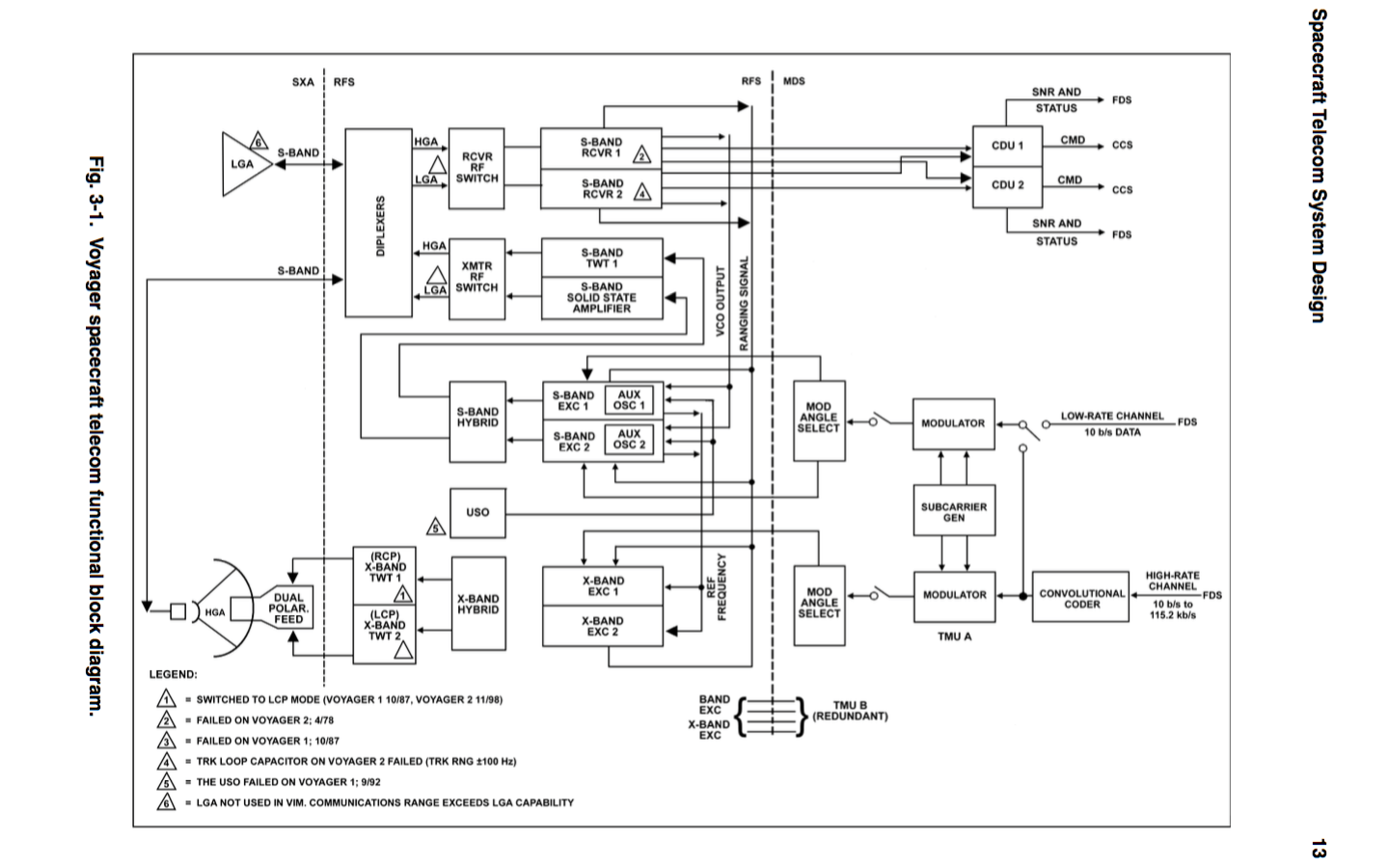I'm working on this questionthis question. This is the farthest (known) communications link humans have ever engineered - an one node is running in deep space on 40 year old technology. Pretty amazing!
In the DESCANSO Design and Performance Summary Series, the NASA document Article 4 - Voyager Telecommunications has a nice block diagram as Figure 3.1 on page 13. A screen shot is shown below.
Question: Where can I see the frequency response of the S-band feed horn at the primary focus, and the S-band receiver front end and IF engineering specs (pass band(s), out-of-band rejection, etc.) and schematic?
I'm primarily interested in the parts that have to cope with, and remove most of the powerful, broad-band radio noise from the sun before any of the final demodulation/correlation.
If you have some representative values that would be great - if you can go ahead and answer the other question linked above - related to rejection of noise from the Sun - that is even greater! But please give me a source, link, or citation or two so I can go reading further. I'm really amazed by this spacecraft and the engineering that went into it - thanks!
above: from Voyager Telecommunications - click for full size.
